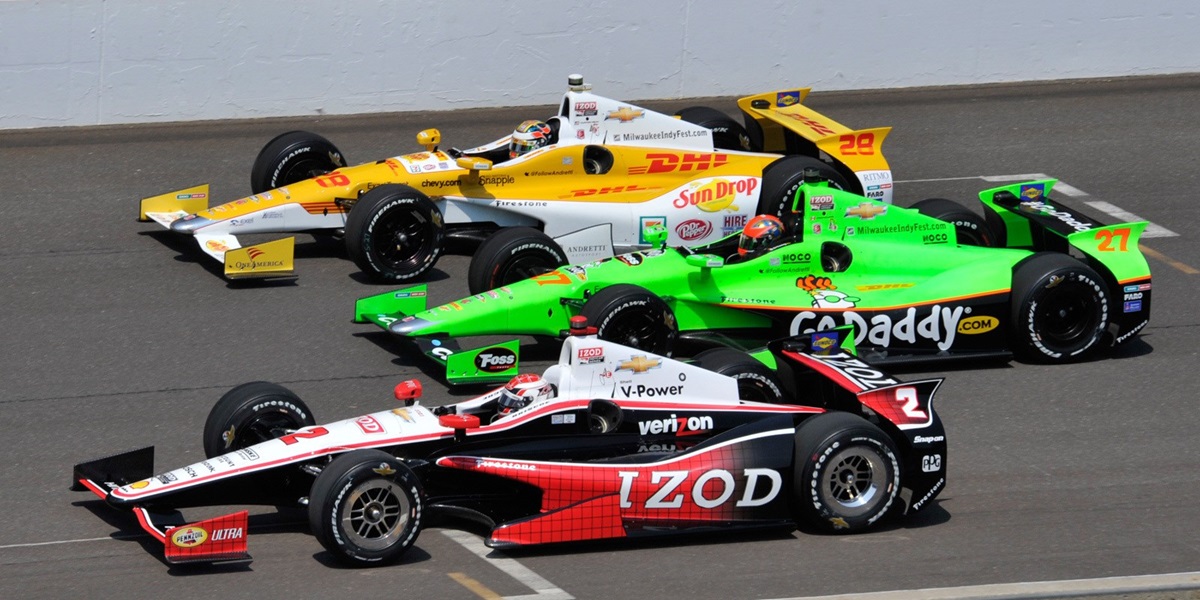
A Few Words About Team Orders
August 31, 2012 | By John Oreovicz
I was surprised that Penske Racing didn’t appear to impose any kind of team orders near the finish of last weekend’s GoPro IndyCar Grand Prix of Sonoma. With Ryan Briscoe leading the race and championship leader Will Power running second late in the race, swapping places in an attempt to boost Power’s points lead seemed like a no-brainer.
I suspect Penske probably actually had a plan in motion to let Power win the race, but a couple of things happened. First Power’s push-to-pass overtake feature malfunctioned. When Power tried to get an extra boost of power, his pit lane speed limiter instead cut in. You could clearly see that Power was losing ground to Briscoe – and more importantly, to the third-place car of Dario Franchitti – exiting the slow corners.
What made it look like Penske was trying to orchestrate a Power victory was the way Briscoe would pull away to a one-second gap when Power had his problems accelerating, but then he would suddenly drift back to within striking distance of Power – and Franchitti.
And that’s ultimately why Penske wasn’t able to pull off the old switcheroo – Franchitti was right on Power’s gearbox, and the slightest hesitation from either of the Penske drivers would have handed an unlikely victory to their Ganassi Racing rival. A safe-1-2 finish, even without maximizing Power’s points haul, was far preferable to a botched attempt at reversing the drivers’ positions.
After the race, I commented to the effect that I hoped the lack of team orders didn’t cost Power the championship, and I referenced something that happened at the Grand Prix of Houston back in 1999.
Like Sonoma, Houston was the third-to-last race of the season, and the CART championship was far from decided. At Houston, point leader Juan Pablo Montoya was knocked out of the race in an early accident. Meanwhile, his chief competitor, Franchitti, was delayed by an early incident of his own, but he fought back through the field to run second behind his Team Green teammate, Paul Tracy.
Like Briscoe in 2012, Tracy wasn’t in championship contention, but his teammate was. Team owner Barry Green toyed with the idea of asking Tracy to let Franchitti through for the win and maximum points, but the call never came. The Green cars crossed the line with Tracy ahead of Franchitti.
Almost inevitably, Franchitti lost the championship by less than the four points he would have gained by winning that race. Green never second-guessed himself, maintaining to this day that Franchitti lost the 1999 championship somewhere other than Houston. Dario crashed out of a couple races, for example, and a slow pit stop during the final race dropped him to a 10th-place finish, which, combined with Montoya’s fourth place in the same race, left them tied atop the standings. Montoya earned the title on a tiebreaker, with seven race wins during the season compared to Franchitti’s three.
A loyal and passionate Montoya fan took to Twitter to remind me (over the course of a seven-tweet tirade) that Montoya pretty much dominated the 1999 season and could or should have won far more than the seven races in which he triumphed.
Despite winning less often, Franchitti was far more consistent over the course of the 20-race campaign, with half as many finishes outside the top 10 as Montoya. And using the scoring system in place at the time, the two men ended up absolutely level on points with 212 apiece. So while my Twitter friend is correct in pointing out that Montoya statistically dominated the season, he still ended up with the same number of points as a guy who won less than half as many races.
To me, that’s what made the Houston situation – and by extension, Sonoma 2012 – the most obvious way the outcome of the championship could have been changed. They were both circumstances in which a team could have done something planned and premeditated to help their driver in the quest for a title.
You can’t change what happens when an engine blows up or another driver accidentally bumps someone off the track – like what happened to Montoya at Houston in 1999, when he was taken out by Helio Castroneves. Or to Ryan Hunter-Reay, who was running a solid third last week at Sonoma when he was punted out of the race by Alex Tagliani.
The difference between third place and 18th – where RHR finished at Sonoma – is 23 points. That’s more than two-thirds of the 36-point deficit to Power that Hunter-Reay must overcome in the final two races of the season.
Imagine the mindset of going into those races with a 13-point gap to overcome instead of 36 points. That championship crown would look a lot closer.
On the other hand, think about how Power’s outlook would differ if he had come away from Sonoma with 46 points in hand, instead of 36. Power will clinch the IZOD IndyCar Series title this weekend if he leaves Baltimore with a 54-point cushion, but those 10 points he potentially lost at Sonoma could loom large.
Excluding the 2011 season, which ended with the cancellation of the final race, the IndyCar title has been decided by an average of 9.2 points since 2006.
Think those 10 points Power potentially lost at Sonoma mean something? And do you think Penske Racing will second-guess itself for not imposing team owners at Sonoma if Power somehow loses the title by less than 10 points?